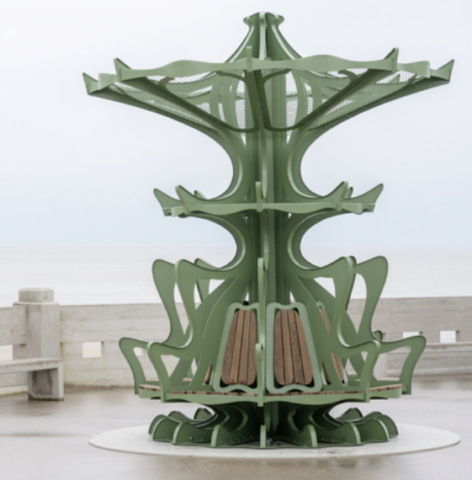Wordly; Oriental Fashion Show
By Hannah Tan
In the days of Charles Frederick Worth, Christian Dior, and Jeanne Lanvin, couture happened in the intimate beaux-arts ateliers of history’s first fashion designers. Back then, high fashion was regarded as an almost mythical work of art; so much so that a strict set of rules had to be implemented to ensure its purity and legacy. With this aim in mind, Le Chambre Syndicale de La Haute Couture was created in 1868; and has since been the gate-keeper for the world of haute couture. Ensuring that fashion labels earn their right to call themselves couture houses; a title that still inspires a sense of both awe and wonder up to this day.
This year marks the 150th anniversary of the establishment of Le Chambre Syndicale de La Haute Couture, and a lot has changed since then. Mass production, mass consumerism, and the rapidly changing sociopolitical landscapes all mean that high fashion is no longer confined to face-to-face fittings with individual clients — luxury designers now create fashion by the thousands. And with the rise of fast fashion, the undeniable influence of streetwear, and the breakneck speed of social media; (which allow fast fashion retailers to produce runway copies before designers can even get them into their boutiques) It seems that fashion is in a state of flux and ripe for a change. Big houses are opting out of the traditional seasonal calendar and going for see-now-buy-now models, while other big couture houses now rely on profits from beauty & fragrance to raise there respective bottom lines. It is no wonder why, to an outsider looking in, the fashion industry may seem a bit aloof. In the face of all this uncertainty we have to ask ourselves — what is the role of haute couture in fashion today?
If you take a step away from post-Brexit London and into the glass covered high-rises of Dubai, the sepia toned cityscapes of Morocco, and the rolling sand dunes of Egypt – you will see that couture is indeed alive, and also thriving. There is a quiet shift going on in the industry where couture labels are now targeting Asia and the middle east more than their European counterparts. Here, the luxury consumer isn’t thinking about austerity, but instead eager to express and impress with their style. With couture’s new eastward focus comes the inevitable rise of couture talent in the East. And why not? With rising demand comes rising supply after all. A mix of old and new, and exceedingly glamorous, couture in the middle east is bustling with new and undiscovered designers. Designers who, thanks to the lovely people behind The Oriental Fashion Show, have now got the chance to shine on one of the fashion industry’s most exclusive stages – Paris Couture Week.
Founded in 2004, The Oriental Fashion Show is organised by Silk Road and Al Andalus. A non-profit organisation whose main goal is to highlight eastern craftsmanship and heritage. A heritage that extends beyond the Arabian Peninsula and into Asia and North Africa – just like the Silk Road. Here, in the gilded baroque halls of The Hôtel de Crillon and The Peninsula Paris, the Oriental Fashion Show presents some of the most exciting designers who are changing the face of oriental couture.
Hany El Behairy – Egypt
After studying couture in Paris, Hany El Behairy has been a staple in the Egyptian couture scene and a growing force on both the Arabic and International fashion stage. His collections feature complex embroideries on delicate tulles, and impossibly feminine silhouettes. His stunning wedding dresses and dramatic evening wear collections reveal a skill and craftsmanship reminiscent of Lacroix and Elie Saab, both of whom he considers his idols.
Saher Okal – Nazareth
Working directly under Elie Saab during his stint on Project Runway Middle east, Saher Okal’s designs undoubtedly reflect his mentor’s unique understanding of cut, drape, and fabric. Featuring a muted palette and subtle technological prints, his collections veer away from traditional couture decorations and instead focus cut and construction.
Slava Zaitsev – Russia
In Russia, Slava Zaitsev is revered as the master of Russian Fashion. Lauded as a Distinguished Artist of the Russian Federation, and recipient of the Laureate State Prize, Slava Zaitsev has been promoting Russian fashion for over 40 years. His collections utilise the bright patterns, rich textures, and bold colours of traditional Russian dress — yet with an outlook towards modernity.
Keti Chkhikvadze – Georgia
There’s a lot of buzz around Tbilisi fashion week, and this is mainly because of designers like Keti Chkhikvadze. Her aesthetic is all about the power of shape and volume. Her collection featured jewel toned satins, clever understated embroideries, and voluminous Balenciaga-esque silhouettes.
Much like how Europe was captivated by the treasures of the silk road, today the Oriental Fashion continues to captivate us with the rich cultures and exotic fashion of the orient. Designers like Hany El Behairy, Keti Chkhikvadze, Saher Okal, and Slava Zaitsev prove that there is always a place for couture in the world, and that is something that will never change. And while haute couture will forever have its heart in Paris – it seems that a big part of its future is now placed in the exotic lands of the Orient.
Words by Hannah Tan-Gillies








